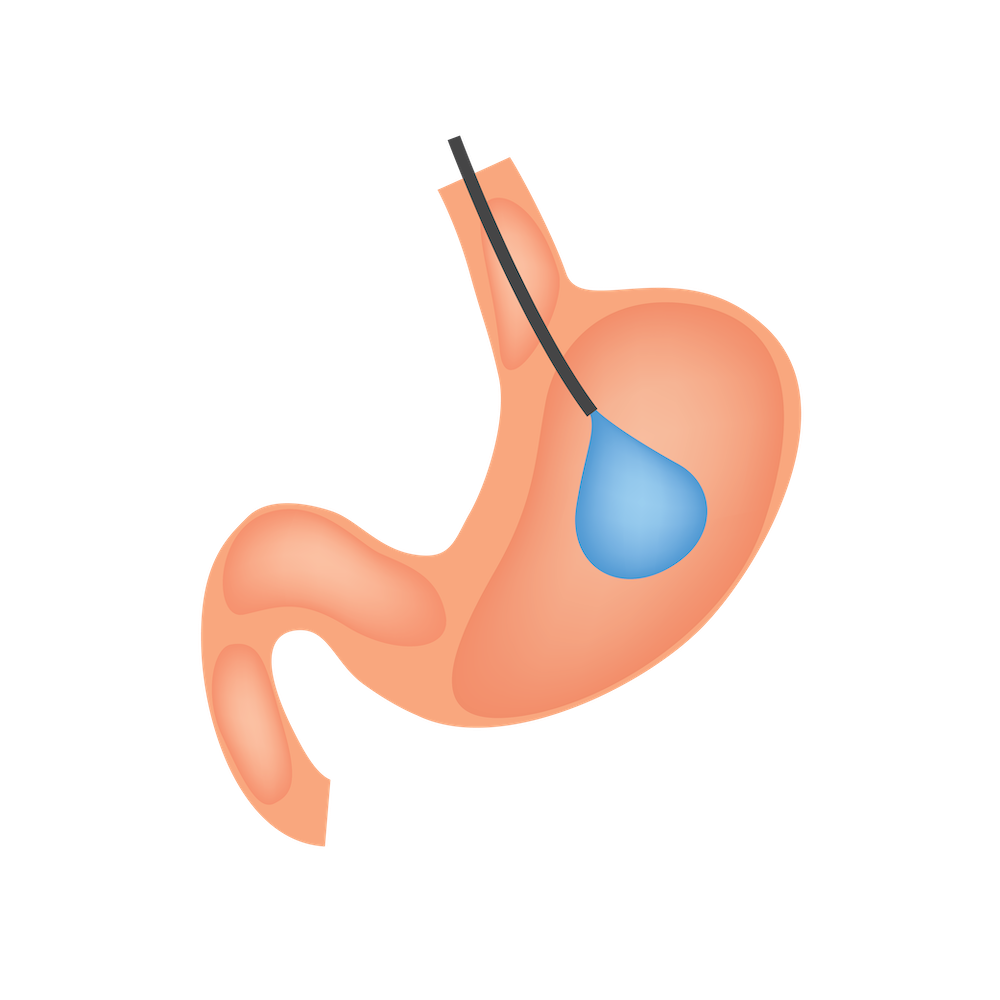Bariatric Procedure
Gastric Balloon
Gastric Balloon
The intragastric balloon system is a non-invasive weight-loss approach that is used for a 6-month period. The balloon is placed in the stomach through the patient’s mouth. Once the balloon is placed properly in the stomach, it is filled with a sterile saline solution. After the balloon is filled, the stomach has a smaller capacity for food and drink resulting in a reduction of hunger. After this procedure, patients typically eat smaller portions and feel satisfied consuming less food compared to before the procedure.
The intragastric balloon procedure is performed to help you lose excess weight and reduce your risk of weight related health issues. Those included but are not limited to:
- Gastroesophageal reflux disease (GERD)
- Heart disease or stroke
- High blood pressure
- Obstructive sleep apnea
- Nonalcoholic fatty liver disease (NAFLD) or nonalcoholic steatohepatitis (NASH)
- Type 2 diabetes
It is important for you to know that making permanent changes to your diet and lifestyle will be needed to maximize your weight loss. With smart food choices, regular exercise and good eating habits, patients who have had an intragastric balloon procedure should enjoy and maintain good weight loss during the time the balloon is in the stomach.
Price: Pending
“Between a very knowledgeable surgeon and caring staff, I wouldn’t hesitate to recommend Dr. Juan and his team to anyone.”
Risks
As with any major surgery, Intragastric Balloon does pose potential health risks. Those risks can include, but are not limited to:
- Pain and nausea. These typically occur in a ⅓ of patients and last for 2 – 3 days.
- Though rare, nausea, vomiting and significant abdominal pain can occur any time after surgery. If that is the case, call your doctor immediately.
- Balloon deflation. If this occurs, there is a risk the balloon could move through your digestive system. This could potentially result in a blockage requiring a procedure or surgery to remove.
- Other possible risks include but are not limited to overinflation, acute pancreatitis, ulcers or a hole (perforation) in the stomach wall. Any of those could require a surgical intervention.

